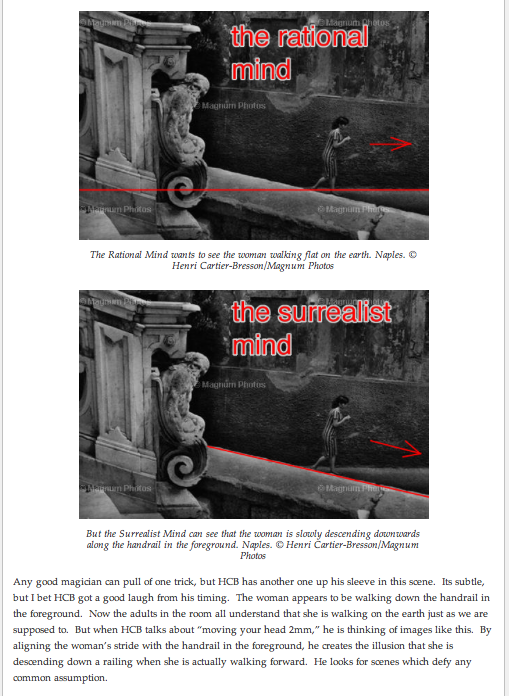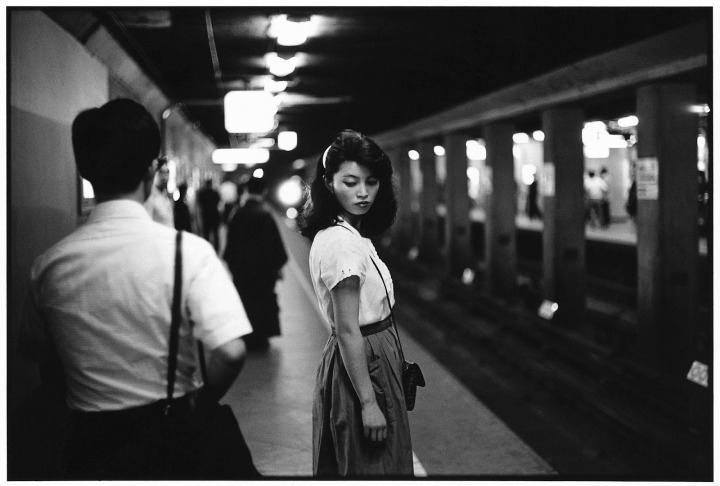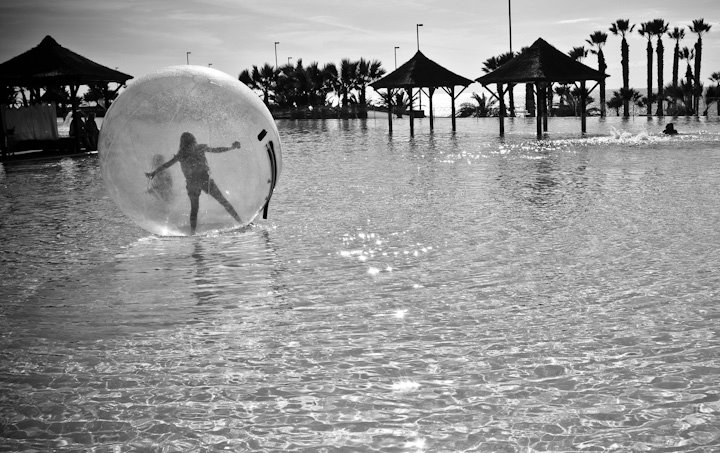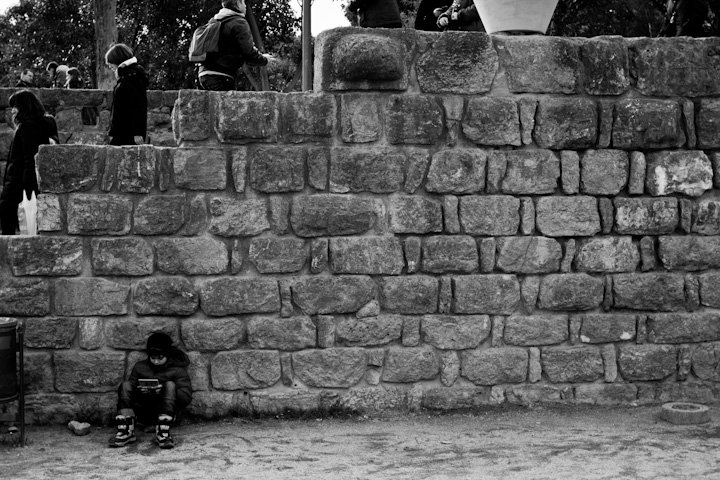Today we have a very special photographer and Internet socializer- Daah Oliveira! She is the founder of the Clicks facebook street photography group which has exploded in members and participation, and serves as an inspiration to me every day. Hailing from Liverpool, England, Daah exhibits a very unique style and a dark sense of humor. Look out for her signature Rabbit-head, and enjoy.
——————————————————————————————————————————-

Q. Brief introduction please!
A. I am originally from Sao Paulo, Brazil where I started my photographer career 5 years ago but one year ago I moved to the UK where I am living at the moment. I have started photographing bands and consequently I have got completely involved in the art’s world which I absolutely love.

Q. First off, what got you started in photography? In street photography?
A. When I finished high school I wasn’t quite sure of what I wanted to be or what course to study at University so I decided to take one year break and enjoy myself as much as I could. Then I did, I had these friends which had a band and was always following their concerts. At first I was only helping them with all I could do and eventually I became a stage assistant. After a while the band started to become quite famous and they decided to record their first DVD. The photographer that was working with us also knew a lot about video and he was in charge of taking care of the DVD’s production. He knew how much I loved photography and then he offered me to stay with his DSLR camera and try to use it and be the photographer for that day. I had never used a DSLR camera before so he quickly taught me the basics of how to use his camera and I was thrilled for that. When he sent me the photos that I took on that day he also said to me that I should definitely go for it and become a photographer because he loved the photos of that day and kept thinking on what he said then I decided to enroll in a photographer course on the followed year. I’m glad I did because photography is definitely my passion.
Street Photography at first was only a project that I wanted to do because I had never imagined myself going on the streets and taking pictures of random people. When I decided to research all about street photography I realized that I had all the wrong impressions of what street photography was about and it was much more interesting that I thought it could be. I watched loads of documentaries, read many blogs and websites and after a while I decided to go with a friend to our first day of street photography session and I absolutely loved it. I realized that street photography wasn’t all about going to the streets and shooting every moment that happened. I only started to shoot street this January and I think I am still experiencing more and more… I noticed things that I don’t like, for example shooting portraits, it just don’t work to me and I thought that street photography was that, taking pics of people on streets. I’m glad that I was wrong.

Q. Do you mainly just shoot in black and white? What attracts you to B&W that makes your photos special?
A. When it comes about my street photography I try to mainly use B&W. I believe that the B&W adds an atmosphere to the photo expressing better what I want to show on my photos.

Q. It’s very hard to see the faces on your subjects, making the photos somewhat eerie and yet enigmatic at the same time. Do you do this on purpose? And why do you do it?
A. When I first started into street photography world I was in a period of experiencing every type of street photography in order to try to find which style would be more applicable to me. As a result, I realized that I don’t really like shooting portraits because it doesn’t say much about my style which I consider being more artistic and gloomy. I rather have one subject in my photos than being in the middle of busy places. It makes my brain stop and I completely close myself to think in a good photo to shoot.

Q. Why do you love street photography? What aspect attracts you to it?
A. I love being able to show my style on my photos, I love going in a street session and not knowing what to expect and how exciting street photography is. The aspect that attracts me most is the fact of how each photo tells a history by itself. I truly get in love for each of my photos because of the story that each of them tells to me.

Q. I always ask this: what’s the most interesting story you have from shooting?
A. Luckily (or not) I don’t have many stories to tell. Maybe there a few ones in which isn’t that interesting to other people but it doesn’t mean that they aren’t interesting to me. The story that I will always remember is when I was out in Liverpool shooting and I went down the docks in a Sunday which is a busy day there with loads of people. I was only resting my feet in one of the benches when I saw this couple arguing but at first I was just watching them and seeing how ridiculous the girl was being for flipping over the guy, hitting on him and when he said to her he was leaving she started to cry and ask him sorry, so he sat down and she started everything again… they did that for ages. I was quite scared of shooting this moment but I started to think that if she was doing that in public she probably wouldn’t even see me taking the picture of them… so I did. It was a funny moment and always will remember the scene as if they were in front of me right now. Other funny moment to me is when I recognized someone on the middle of the streets and I try to think where I had seen that person before, then I have a click in my head and I remember that I have a picture of that person.

Q. What subjects do you like to shoot? Or any specific locations? Why?
A. I like open places with good backgrounds and good illumination. Because I love the game that you can do with the lights, the shadows and shooting in an open place helps to call all the attention to the details. As I said before, I don’t like busy places because it is the complete opposite of my style.

Q. What gear do you use?
A. I use a Nikon D7000 with 50mm lens and for my blur/motion photos I use my 18-135mm.

Linda Wisdom- from Clicks
Q. You helped found the group Clicks on facebook; tell us more about why you made it, what it is, and so on!
A. At the first the group was created for a competition that I ran on my fan page. The theme was B&W reflection and loads of people were participating of it. Most of these people were street photographers so when the competition was finished I decided to rename the group to B&W Reflections and most of them kept participating of the group even after the competition closed.
I always see amazing pictures on my feeds and I keep a folder on my computer of pictures that I like or I used to post on a friends’ wall a picture that I knew that they would like so I started to think ‘why not create a community page and share this with more and more people?’. This was the main reason why I created CLICKS’ page and I enjoyed that I had the group already there and decided to change the name of the group as well. Everybody in the group seemed to love the idea and then people started to post more, new people started to participate of the group and it is really motivational to see all these interaction going on over there. I also wanted to make a good group of friends to share experiences, critiques, knowledge, etc.

Q. Any links/pages/portfolio you want to share with us?
A. FB page: https://www.facebook.com/daaholiveiraphoto
Flickr: http://www.flickr.com/photos/daaholiveira
Clicks Page: https://www.facebook.com/clickstreet
Q. If you had to pick just one piece of advice to give aspiring photographers/street photographers, what would it be?
A. To go out and shoot street with no rules on mind or fear. Experiencing is the best way to learn. 🙂
————————————————————————————————————————————————————————-
&&Phil, love those pictures? Share this article, comment, like, or tweet it!





















































